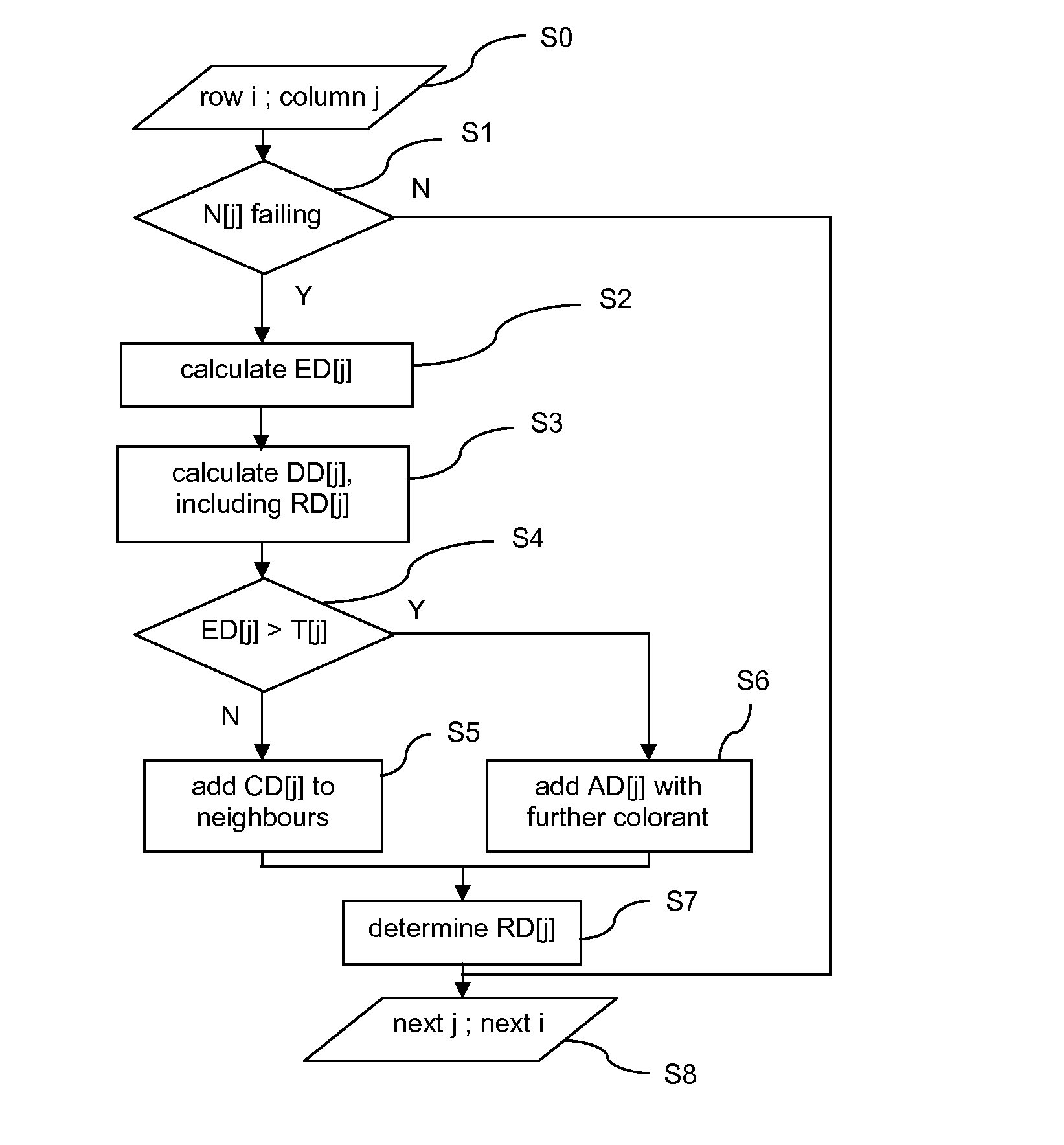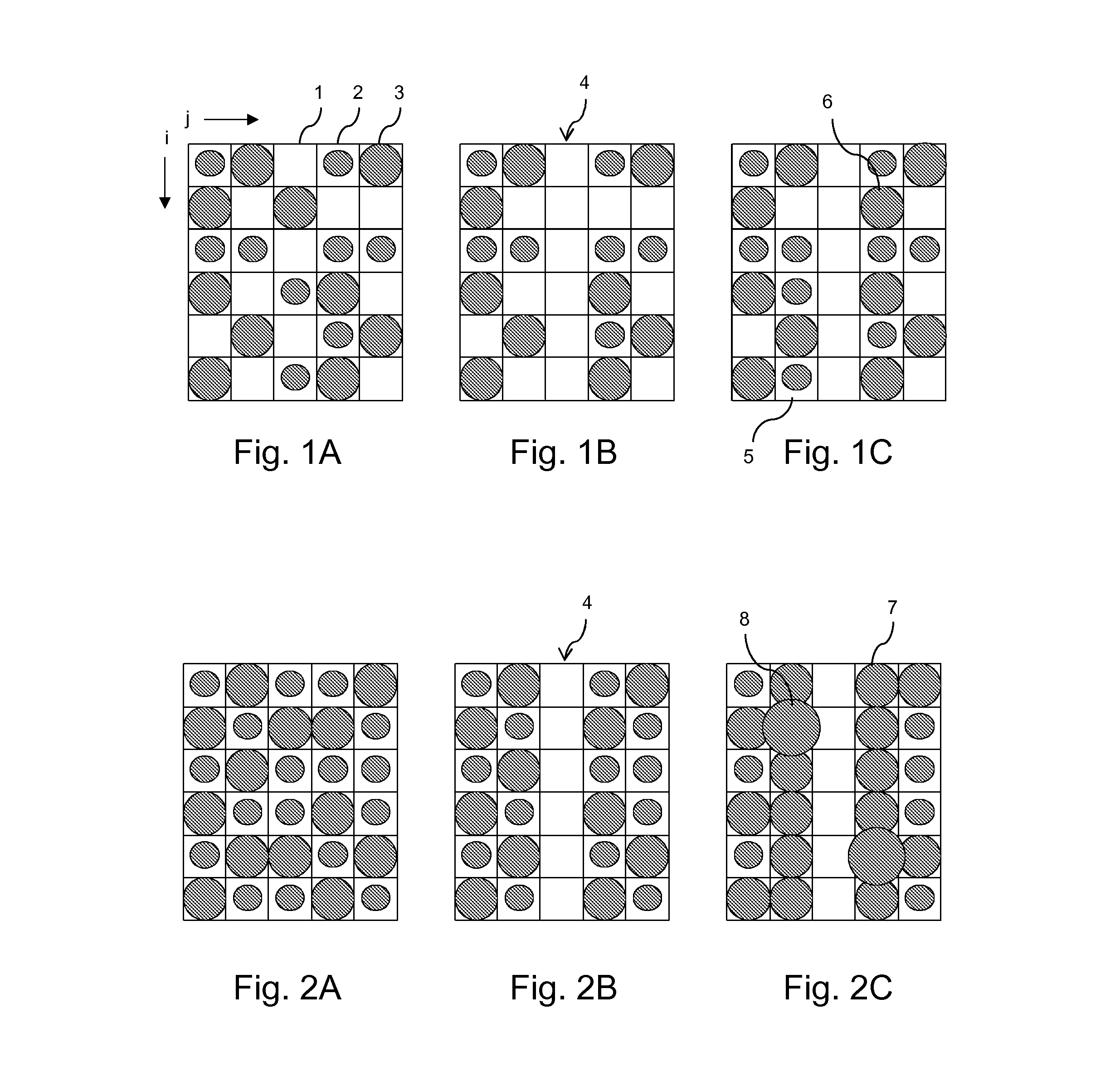Method for compensating a failing nozzle
a nozzle and nozzle technology, applied in the field of compensating a failing nozzle, can solve the problems of undercompensation of linear defects or light lines in printed images, ineffective addition of colorants in providing additional optical density, and low probability of additional colorants overlapping other applied colorants, etc., to achieve the effect of little or no additional optical density, and high probability of addition of colorants
- Summary
- Abstract
- Description
- Claims
- Application Information
AI Technical Summary
Benefits of technology
Problems solved by technology
Method used
Image
Examples
Embodiment Construction
[0023]The present invention will now be described with reference to the accompanying drawings, wherein the same or similar elements are identified with the same reference numeral.
[0024]FIG. 1A shows an arrangement of dots that is intended to be produced by an inkjet printer. In this example, two different dot sizes are applied, but this is not essential in the present invention. A larger number of dot sizes is possible, but also a single dot size may be applied. The positions on a receiving medium where a dot may be applied, are often referenced as print pixels. The lines between the print pixels are a guidance for the eye only and are not part of the image as printed. In FIG. 1A, print pixel 1 does not receive a dot, print pixel 2 receives a small dot and print pixel 3 a large dot. The size of the dots is not necessarily limited to the print pixel area, as shown in FIG. 1A, but may just as well extend across the print pixel boundaries. The print pixels are arranged in rows, labeled...
PUM
 Login to View More
Login to View More Abstract
Description
Claims
Application Information
 Login to View More
Login to View More - R&D
- Intellectual Property
- Life Sciences
- Materials
- Tech Scout
- Unparalleled Data Quality
- Higher Quality Content
- 60% Fewer Hallucinations
Browse by: Latest US Patents, China's latest patents, Technical Efficacy Thesaurus, Application Domain, Technology Topic, Popular Technical Reports.
© 2025 PatSnap. All rights reserved.Legal|Privacy policy|Modern Slavery Act Transparency Statement|Sitemap|About US| Contact US: help@patsnap.com



